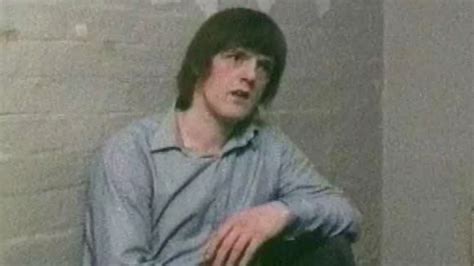Britain’s Most Dangerous Killer Leaves Glass Cage After Nearly Five Decades
Robert Maudsley, the UK’s longest-serving solitary confinement prisoner and one of the nation’s most feared serial killers, has been transferred out of his custom-built glass cell at HMP Wakefield after 46 years. Nicknamed “Hannibal the Cannibal” for his gruesome prison killings, Maudsley had been kept in isolation since the 1970s—but was recently moved after launching a hunger strike when his beloved PlayStation and TV were removed.
The transfer, which sees Maudsley now housed among other high-risk inmates at HMP Whitemoor, has sparked concern among prison staff and reform advocates, with one warning it’s a “disaster waiting to happen.”
Who Is Robert Maudsley?
From Troubled Childhood to Cold-Blooded Killer
Born in Liverpool in 1953, Robert Maudsley endured a traumatic upbringing marked by physical and emotional abuse. His descent into violence began in 1974 when he killed a man who allegedly showed him explicit photos of children. Maudsley’s killings didn’t stop there—he went on to murder three more men, two of them fellow inmates, solidifying his infamy.
His most notorious acts came in 1978 when he killed two prisoners in one day at Wakefield Prison. The shocking nature of his crimes and his ability to kill while under maximum security earned him the nickname “Hannibal the Cannibal,” despite there being no actual reports of cannibalism.
🔗 More about Maudsley’s criminal history: Wikipedia – Robert Maudsley
Life in a Glass Cage
The Real-Life Hannibal Lecter Cell
Following his prison murders, authorities deemed Maudsley too dangerous to be housed with others. In 1983, a special 18ft by 15ft cell was constructed for him beneath Wakefield Prison—complete with bulletproof glass and a reinforced steel door. He spent 23 hours a day inside this high-tech cage, designed to prevent any contact with other inmates.
This cell, eerily similar to the one portrayed in The Silence of the Lambs, earned Maudsley cult-like status and notoriety as one of Britain’s most isolated prisoners.
The Hunger Strike That Sparked His Transfer
Maudsley Protests the Loss of His Only Pleasures
In early 2025, Maudsley began a hunger strike after prison officials confiscated his PlayStation, television, and other recreational items. These belongings had served as his only mental stimulation and lifeline during decades of isolation. His hunger strike lasted several weeks, during which supporters raised concerns over his declining health and psychological state.
According to long-time correspondent Loveinia Grace MacKenney, “They took away his only connection to the outside world. He felt abandoned and lost. This was a man who hadn’t seen another prisoner in decades.”
📰 Related news: UK’s Most Dangerous Prisoner Moved After 46 Years
Maudsley Moved to HMP Whitemoor
From Isolation to Population: A Risky Decision?
After negotiations and mounting pressure, prison authorities agreed to transfer Maudsley to HMP Whitemoor in Cambridgeshire, a Category A facility known for housing high-risk offenders. He is now located in F Wing, a therapeutic unit for inmates with personality disorders.
This marks a massive shift for a man who has been completely cut off from other prisoners for nearly half a century. Maudsley is now surrounded by more than 70 inmates, prompting fears about his safety and that of others.
🧠 Expert Insight: “It’s a psychological gamble,” said one anonymous prison psychologist. “He’s been institutionalized in complete isolation for decades. Throwing him back into a communal setting could be destabilizing.”
Supporters Warn of a ‘Disaster Waiting to Happen’
Calls for Caution and Comprehensive Support
Loveinia MacKenney and other supporters have raised the alarm over the move, warning that Maudsley’s fragile mental state and deep-seated trauma make this new environment potentially harmful. “This is not rehabilitation. This is relocation under duress,” she told reporters. “We could be setting up a disaster.”
While prison officials insist Maudsley will be closely monitored, critics argue that the shift appears reactive—driven more by public attention and his hunger strike than by a comprehensive plan for reintegration.
📰 Full report: UK’s Most Dangerous Killer Ends Hunger Strike
Rehabilitation or Risk? The Debate Continues
Is There a Path Forward for Maudsley?
The case of Robert Maudsley raises broader questions about the UK’s approach to long-term solitary confinement and whether individuals like him can ever truly be reintegrated. Some argue that decades in a glass box amount to psychological torture, while others believe it was the only safe option.
“Whatever your view, we can’t ignore the consequences of 46 years in solitary,” said a spokesperson for a prison reform group. “We have to consider the mental toll, not just the criminal record.”
Conclusion
A Notorious Killer, a Controversial Decision
The transfer of Robert Maudsley from solitary confinement into a communal prison unit is more than just a change in location—it’s a symbol of shifting policies, public pressure, and the complexities of managing Britain’s most dangerous offenders.
Whether this marks a new chapter in Maudsley’s life or the beginning of further institutional conflict remains to be seen. For now, prison officials—and the public—will be watching closely.
FAQs
Who is Robert Maudsley?
Robert Maudsley is a convicted serial killer responsible for four murders, including three inside prisons. He’s known as “Hannibal the Cannibal,” though there’s no evidence of cannibalism.
Why was he in solitary confinement for 46 years?
Maudsley was deemed too dangerous to be housed with other inmates after killing fellow prisoners in the 1970s and 1980s.
Why was he moved recently?
He went on a hunger strike after prison authorities removed his PlayStation and TV, prompting officials to re-evaluate his confinement.
Where is he now?
Maudsley is now housed at HMP Whitemoor in Cambridgeshire, in a therapeutic unit with other high-risk prisoners.
Is the move considered safe?
Supporters and experts have expressed concerns, calling it a “disaster waiting to happen” due to Maudsley’s long-term psychological isolation.



